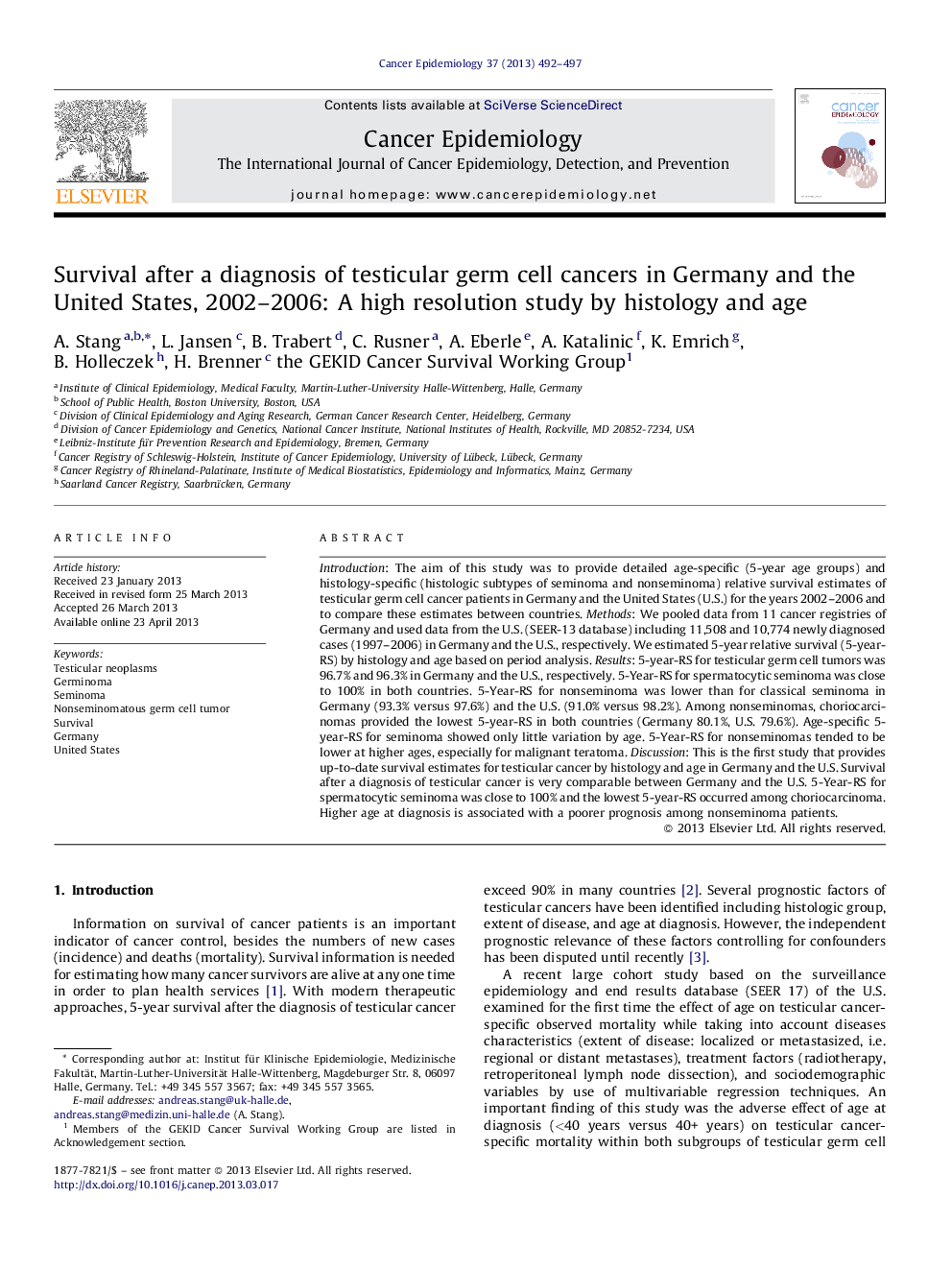| Article ID | Journal | Published Year | Pages | File Type |
|---|---|---|---|---|
| 10897411 | Cancer Epidemiology | 2013 | 6 Pages |
Abstract
Introduction: The aim of this study was to provide detailed age-specific (5-year age groups) and histology-specific (histologic subtypes of seminoma and nonseminoma) relative survival estimates of testicular germ cell cancer patients in Germany and the United States (U.S.) for the years 2002-2006 and to compare these estimates between countries. Methods: We pooled data from 11 cancer registries of Germany and used data from the U.S. (SEER-13 database) including 11,508 and 10,774 newly diagnosed cases (1997-2006) in Germany and the U.S., respectively. We estimated 5-year relative survival (5-year-RS) by histology and age based on period analysis. Results: 5-year-RS for testicular germ cell tumors was 96.7% and 96.3% in Germany and the U.S., respectively. 5-Year-RS for spermatocytic seminoma was close to 100% in both countries. 5-Year-RS for nonseminoma was lower than for classical seminoma in Germany (93.3% versus 97.6%) and the U.S. (91.0% versus 98.2%). Among nonseminomas, choriocarcinomas provided the lowest 5-year-RS in both countries (Germany 80.1%, U.S. 79.6%). Age-specific 5-year-RS for seminoma showed only little variation by age. 5-Year-RS for nonseminomas tended to be lower at higher ages, especially for malignant teratoma. Discussion: This is the first study that provides up-to-date survival estimates for testicular cancer by histology and age in Germany and the U.S. Survival after a diagnosis of testicular cancer is very comparable between Germany and the U.S. 5-Year-RS for spermatocytic seminoma was close to 100% and the lowest 5-year-RS occurred among choriocarcinoma. Higher age at diagnosis is associated with a poorer prognosis among nonseminoma patients.
Keywords
Related Topics
Life Sciences
Biochemistry, Genetics and Molecular Biology
Cancer Research
Authors
A. Stang, L. Jansen, B. Trabert, C. Rusner, A. Eberle, A. Katalinic, K. Emrich, B. Holleczek, H. Brenner, the GEKID Cancer Survival Working Group the GEKID Cancer Survival Working Group,
